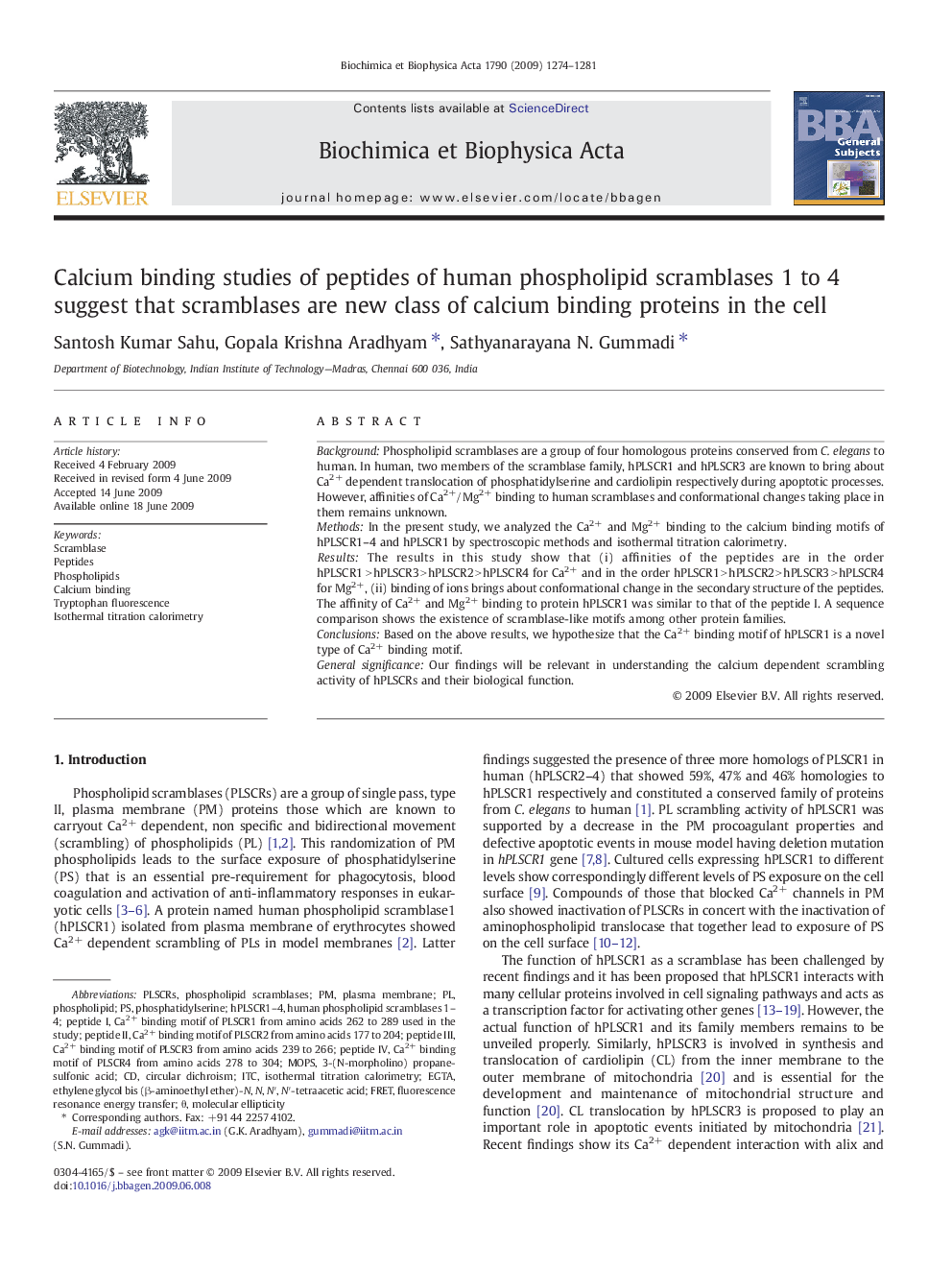| Article ID | Journal | Published Year | Pages | File Type |
|---|---|---|---|---|
| 1948099 | Biochimica et Biophysica Acta (BBA) - General Subjects | 2009 | 8 Pages |
BackgroundPhospholipid scramblases are a group of four homologous proteins conserved from C. elegans to human. In human, two members of the scramblase family, hPLSCR1 and hPLSCR3 are known to bring about Ca2+ dependent translocation of phosphatidylserine and cardiolipin respectively during apoptotic processes. However, affinities of Ca2+/Mg2+ binding to human scramblases and conformational changes taking place in them remains unknown.MethodsIn the present study, we analyzed the Ca2+ and Mg2+ binding to the calcium binding motifs of hPLSCR1–4 and hPLSCR1 by spectroscopic methods and isothermal titration calorimetry.ResultsThe results in this study show that (i) affinities of the peptides are in the order hPLSCR1 > hPLSCR3 > hPLSCR2 > hPLSCR4 for Ca2+ and in the order hPLSCR1 > hPLSCR2 > hPLSCR3 > hPLSCR4 for Mg2+, (ii) binding of ions brings about conformational change in the secondary structure of the peptides. The affinity of Ca2+ and Mg2+ binding to protein hPLSCR1 was similar to that of the peptide I. A sequence comparison shows the existence of scramblase-like motifs among other protein families.ConclusionsBased on the above results, we hypothesize that the Ca2+ binding motif of hPLSCR1 is a novel type of Ca2+ binding motif.General significanceOur findings will be relevant in understanding the calcium dependent scrambling activity of hPLSCRs and their biological function.
